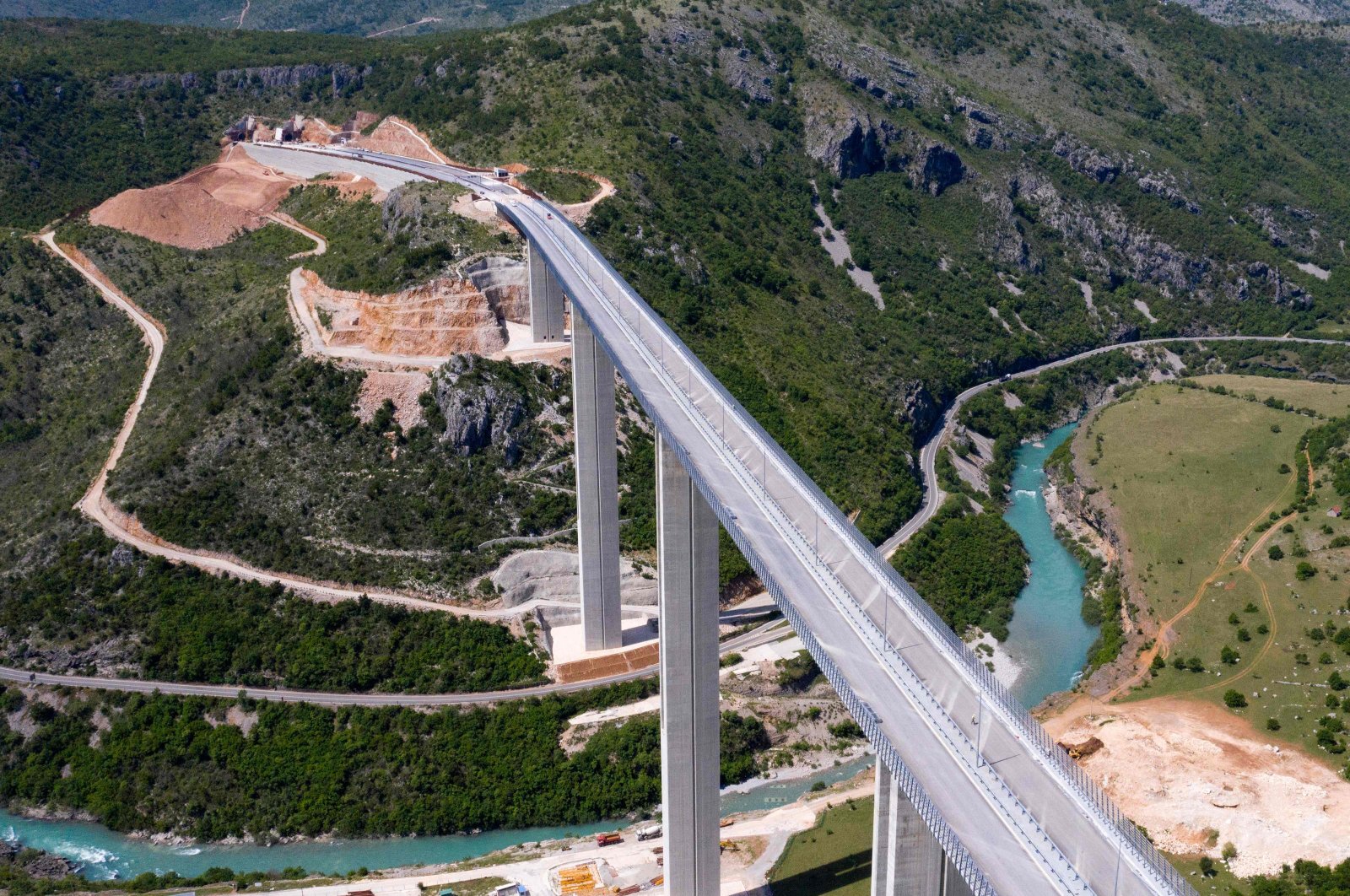Andreea Brinza: The BRI in the CEE
The Winding Road of the BRI in the Central
and Eastern European (CEE) Region
Andreea Brinza

Highway from the city of Bar in Montenegro to Serbia near Matesevo, constructed by China Road and Bridge Corporation (CRBC)
China’s BRI has been a blank space where anybody could fill in their definition of what the initiative actually represents. From a mega-infrastructure plan, a masterplan for global influence, a Marshall Plan or even a debt trap, it has now been 8 years during which the BRI traveled a winding road and showed the limits of a relatively undefined and ambiguous initiative.
If, at the beginning, the BRI was mainly perceived through the positive optic of investments and development, over the past four years, the image of the BRI has deteriorated to such an extent that attaching the label to projects no longer generates enthusiasm but rather criticism. This change of perspective was also spurred by the growing US-China rivalry and amplified a wave of disappointment among European countries, especially those from the 16+1 mechanism, which was inaugurated by China almost a decade ago.
The 16+1 mechanism was formed in 2012 by China and 16 countries from Central and Eastern Europe. Greece joined in 2019, transforming it into the 17+1, but Lithuania has recently left the mechanism, illustrating the disappointment that has emerged in these parts of Europe. While attracted by hopes of investments and trade, dozens of promises at summits over the years failed to materialize.
Established before the Belt and Road, the 16+1 mechanism was placed under the BRI umbrella. The BRI gathers a myriad of projects and proposals under the aura of the “Silk Road,” many of them old Chinese projects that were rebranded as “Belt and Road” in order to enhance the allure of the initiative. Such projects would have been or were implemented even without the BRI. Thus, the Belt and Road is more about creating a branding strategy for China’s foreign policy and overseas investments [1] than a mega-infrastructure project, as it is often perceived.
The Port of Piraeus is hailed as the BRI’s biggest success story in Europe, but the initiative had no place in COSCO’s calculus to take over the port, which was mainly driven by commercial interests and preceded the BRI’s launch. In search of profit, COSCO invested in the port and transformed it into a success story, later placed under the BRI brand. Projects in other places had a similar fate.
But sometimes, the brand was the only tangible outcome. The Budapest-Belgrade railway, the flagship BRI project in Europe, didn’t succeed in scoring points in favor of China. Although it was meant to be implemented with the most China-friendly governments in Europe, those of Hungary and Serbia, it is still nowhere near completion, with only a few kilometers built, even though it was first proposed in 2013. While recently China, Serbia and Hungary marked the beginning of the construction of a new section of the railway, [2] the finished kilometers in Serbia [3] were built by a Russian company, not by a Chinese one. Apart from the Budapest-Belgrade railway, Hungary doesn’t host any important BRI project and its relations with China are mainly the work of prime minister Viktor Orban, who is using them as leverage to deal with the European Union.
In other cases in Europe, instead of a disappointment, the BRI even attracted intense criticism, as in the case of the Montenegro highway. [4] Accusations of debt traps, lack of high standards and environmental issues haunted the Chinese project in this Balkan country, whose new government has criticized the project. [5]
Montenegro wasn’t the only country where China, through the BRI, failed to deliver its promises. In many other CEE countries, almost all of whom had signed BRI memoranda of understanding with China, there is no trace of the BRI or of large-scale Chinese investments. Without strong economic links to China, some CEE countries have been able to afford turning their backs and even to adopt a more critical stance towards Beijing. For example, Romania was the first country to sign a 5G MoU with the United States targeting Huawei, then implementing it into national law; it also abandoned a $8 billion Chinese investment in the Cernavodă Nuclear Power Plant after years of negotiations — a project never branded as BRI, as it was mired in uncertainty — and then restricted the access of Chinese companies to public infrastructure tenders altogether.
Today, with this wave of disappointment throughout the CEE, it is more difficult for China to develop and improve its relations with Europe. And with all the new infrastructure initiatives, like the Global Gateway or Build Back Better World (B3W), the BRI has entered a period of competition, as it is perceived in the European Union as an unreliable initiative that doesn’t respect high quality standards, or even as a debt trap.
The BRI was meant to provide a positive brand for China’s foreign policy, revolving around the mythical, peaceful image of the Silk Road, but years of ambiguity, unfulfilled promises, and questionable projects have transformed the BRI into a negative brand, at least in Europe and the West. So, while China is trying to change its image by placing more emphasis on greener projects and higher standards, it will take a lot of effort to rebuild its appeal.
Notes
1. Brinza, Andreea. 2018. “Redefining the Belt and Road Initiative,” The Diplomat
2. Xinhua. 2021. “Chinese companies start building 108-km-long section of Belgrade-Budapest railway,” Xinhua Net
3. RZD International. 2021. “RZD International completes the railway track laying at the key facilities of the Stara Pazova - Novi Sad section in Serbia,” RZD International
4. Higgins, Andrew. 2021. “A Pricey Drive Down Montenegro’s Highway ‘From Nowhere to Nowhere’,” The New York Times
5. Standish, Reid, Hafner, Asja, Tuhina, Gjeraqina and Brajovic, Slavica. 2021. “No Clear Option for Montenegro as It Tries To Repay $1 Billion Highway Debt To China,” Radio Free Europe
 Andreea Brinza is vice president of The Romanian Institute for the Study of the Asia Pacific (RISAP), where she researches China's foreign policy, with a special focus on the Belt and Road Initiative.
Andreea Brinza is vice president of The Romanian Institute for the Study of the Asia Pacific (RISAP), where she researches China's foreign policy, with a special focus on the Belt and Road Initiative.

